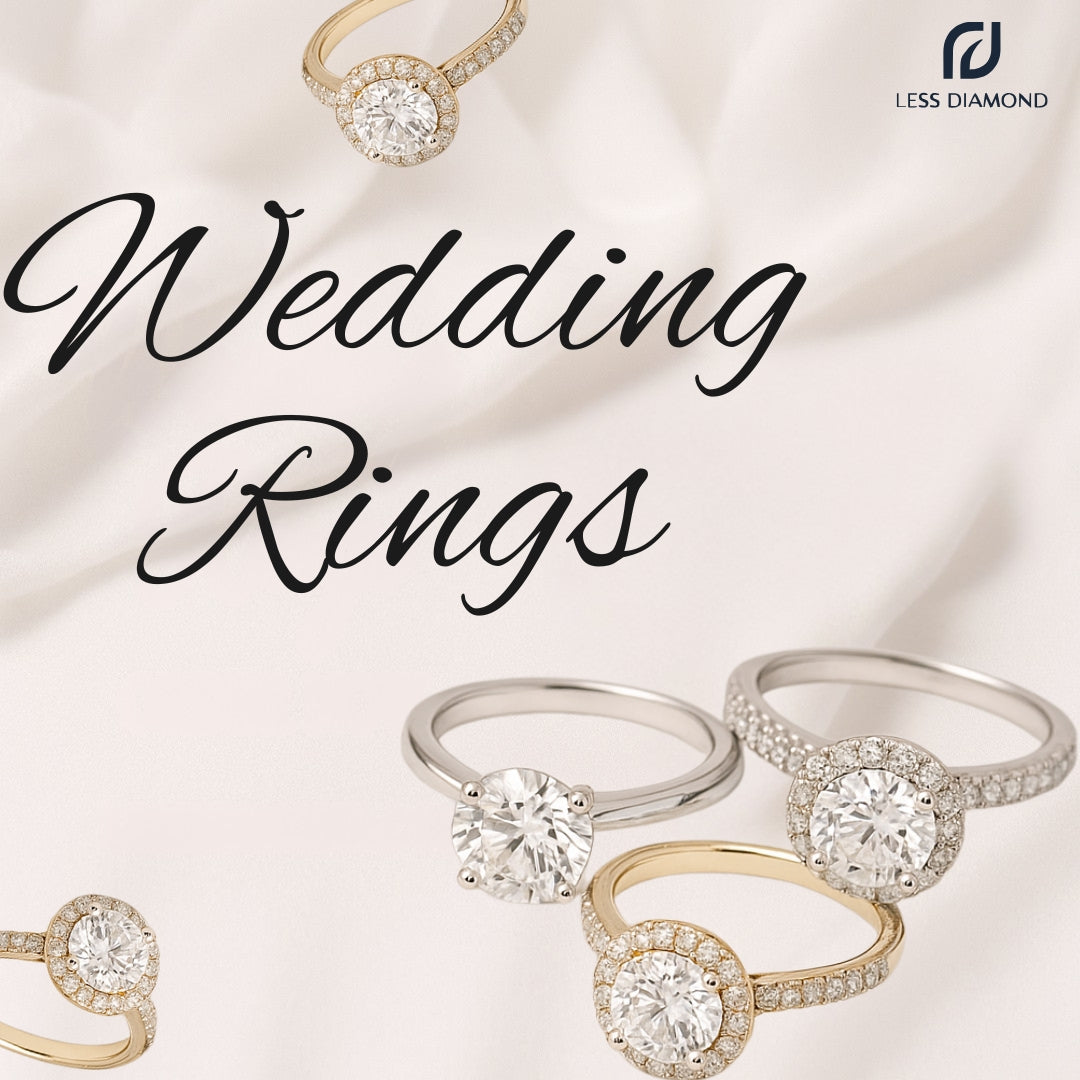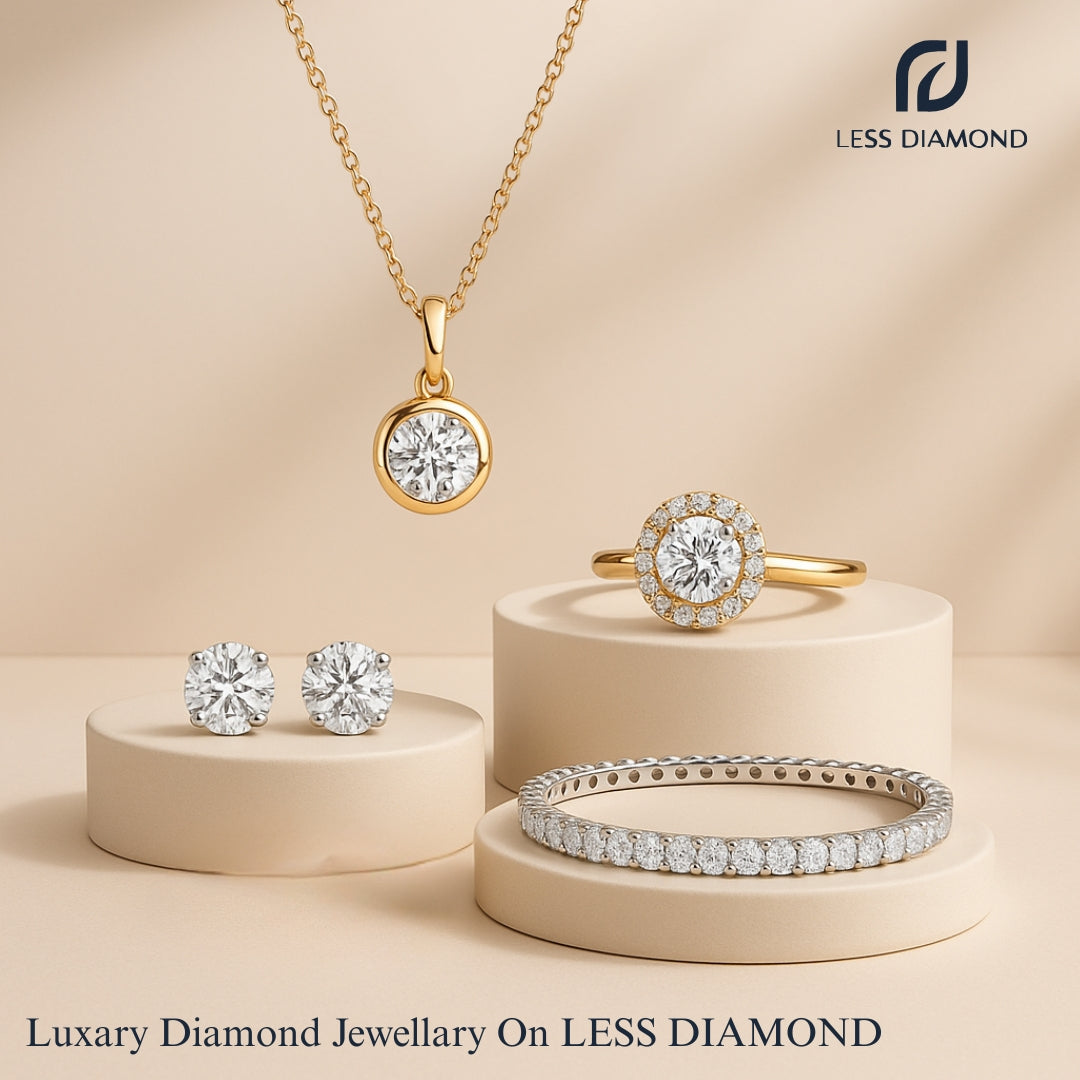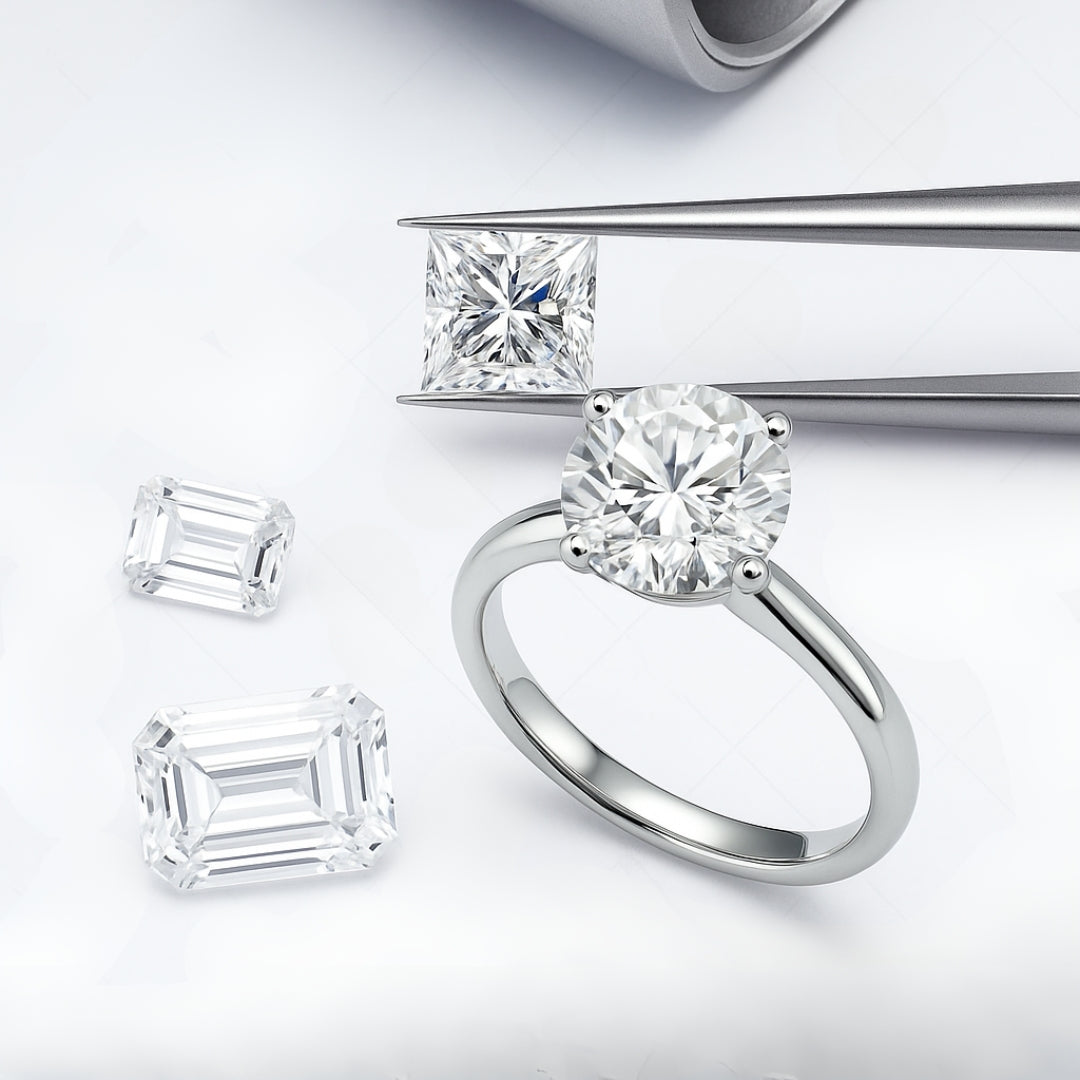The History of Moissanite: From Discovery to Jewelry

|
Table Of Content : 1. Discovery Of Moissanite |
In The World Of Gemstones, Moissanite Holds A Unique Allure, Captivating Jewelry Enthusiasts With Its Brilliance And Durability. From Its Serendipitous Discovery To Its Transformation Into A Beloved Choice For Fine Jewelry, The Journey Of Moissanite Is As Fascinating As The Stone Itself. Join Us As We Explore The Rich History And Evolution Of Moissanite, Tracing Its Path From The Stars To The Hearts Of Jewelry Lovers Worldwide.
Discovery Of Moissanite:
Moissanite's Story Begins In 1893 When French Chemist Henri Moissan Discovered Shimmering Crystals In A Meteorite Crater In Canyon Diablo, Arizona. Initially, Moissan Mistakenly Identified The Crystals As Diamonds Due To Their Dazzling Brilliance. However, Upon Further Examination, He Realized That These Crystals Were Composed Of Silicon Carbide—A Compound That Had Never Been Seen On Earth Before.
Natural Vs. Synthetic Moissanite:
Natural Moissanite Is Extremely Rare And Found Only In Meteorites, Making It Virtually Impossible To Use In Jewelry. In The Late 20th Century, Scientists Developed A Method To Create Synthetic Moissanite In Laboratories. This Process Involves Replicating The Conditions Of Extreme Heat And Pressure That Occur Naturally In Meteorite Impacts.
Synthetic Moissanite Possesses The Same Chemical Composition And Crystal Structure As Natural Moissanite, But Its Availability And Affordability Have Made It A Popular Alternative To Traditional Gemstones Like Diamonds.
Moissanite 3.60 CT Princess Cut Diamond Avant Garde Engagement Ring
Moissanite's Optical Properties:
What Sets Moissanite Apart From Other Gemstones Is Its Exceptional Brilliance And Fire. Its Refractive Index Is Higher Than That Of Diamonds, Meaning It Reflects More Light And Sparkles With A Rainbow-Like Play Of Colors. Moissanite's Fire—The Dispersion Of Light Into Flashes Of Color—Is Even More Pronounced Than That Of Diamonds, Creating A Dazzling Spectacle That Captivates The Eye.
Introduction To The Jewelry Market:
Moissanite Entered The Jewelry Market In The Late 1990s, Offering Consumers A Stunning Alternative To Diamonds. Initially Marketed As A Diamond Simulant, Moissanite Quickly Gained Popularity For Its Beauty, Durability, And Affordability. Jewelry Designers And Manufacturers Began Incorporating Moissanite Into Their Collections, Creating Engagement Rings, Earrings, Pendants, And More To Cater To A Growing Demand For Unique And Ethical Gemstone Options.
Moissanite 3.28 CT Marquise Loose Diamond
The Appeal Of Moissanite:
Moissanite's Appeal Lies In Its Combination Of Beauty And Practicality. It Offers The Brilliance And Fire Of Diamonds At A Fraction Of The Cost, Making It An Attractive Choice For Budget-Conscious Consumers Who Don't Want To Compromise On Sparkle And Elegance. Moreover, Moissanite Is Ethically Sourced And Conflict-Free, Aligning With The Growing Demand For Sustainable And Responsible Jewelry Options.
Advancements In Moissanite Technology:
Over The Years, Advancements In Moissanite Technology Have Further Enhanced Its Appeal. Innovations In Cutting And Faceting Techniques Have Refined Moissanite's Optical Properties, Maximizing Its Brilliance And Fire. New Shapes And Sizes Have Expanded The Design Possibilities For Jewelry Designers, Allowing Them To Create Intricate And Breathtaking Pieces That Showcase Moissanite's Unique Characteristics.
Moissanite 2.05 CT Emerald Cut Diamond Art Deco Anniversary Ring
Moissanite In Modern Jewelry Design:
Today, Moissanite Is Celebrated In Modern Jewelry Design For Its Versatility And Aesthetic Appeal. It Is Frequently Used As The Centerpiece In Engagement Rings, Offering Couples An Affordable Yet Stunning Alternative To Traditional Diamond Rings. Moissanite's Hardness And Durability Also Make It Suitable For Everyday Wear, Ensuring That Jewelry Remains Beautiful And Pristine For Years To Come.
Environmental And Ethical Considerations:
Beyond Its Beauty And Affordability, Moissanite's Ethical And Environmental Credentials Are Increasingly Important To Today's Consumers. Unlike Diamonds, Which Can Be Associated With Environmental Degradation And Ethical Concerns Such As Conflict Mining, Moissanite Is Lab-Created Using Sustainable Practices. It Offers Peace Of Mind To Conscientious Buyers Who Prioritize Ethical Sourcing And Sustainability In Their Purchasing Decisions.

 Moissanite 1.70 CT Round Diamond Fashion Earring
Moissanite 1.70 CT Round Diamond Fashion Earring
The Future Of Moissanite:
Looking Ahead, Moissanite Continues To Evolve And Grow In Popularity Within The Jewelry Industry. Advances In Technology And Consumer Demand For Ethical Alternatives Are Expected To Drive Further Innovation In Moissanite Production And Design. As More People Discover The Beauty And Benefits Of Moissanite, It Is Likely To Become An Even More Prominent Choice For Fine Jewelry, Offering A Sustainable And Dazzling Option For Generations To Come.
Conclusion:
The Journey Of Moissanite From A Meteorite Crater To Jewelry Showcases The Intersection Of Science, Beauty, And Craftsmanship. Its Discovery Sparked Curiosity And Admiration, Leading To Its Transformation Into A Beloved Gemstone Celebrated For Its Brilliance And Ethical Provenance. At Less Diamond, We Embrace Moissanite As A Symbol Of Innovation And Elegance, Offering Our Customers Exquisite Pieces That Embody The Timeless Allure Of This Extraordinary Gemstone.
Explore Our Collection Of Moissanite Jewelry And Discover The Beauty And Brilliance That Define This Remarkable Gemstone. From Engagement Rings To Statement Earrings, Each Piece Is Crafted With Care To Ensure Exceptional Quality And Unparalleled Sparkle. Join Us In Celebrating The Legacy Of Moissanite And Its Place In The Future Of Fine Jewelry.














